Tissue-specific enhancer-gene maps from multimodal single-cell data identify causal disease alleles
- PMID: 38594305
- PMCID: PMC11456345
- DOI: 10.1038/s41588-024-01682-1
Tissue-specific enhancer-gene maps from multimodal single-cell data identify causal disease alleles
Abstract
Translating genome-wide association study (GWAS) loci into causal variants and genes requires accurate cell-type-specific enhancer-gene maps from disease-relevant tissues. Building enhancer-gene maps is essential but challenging with current experimental methods in primary human tissues. Here we developed a nonparametric statistical method, SCENT (single-cell enhancer target gene mapping), that models association between enhancer chromatin accessibility and gene expression in single-cell or nucleus multimodal RNA sequencing and ATAC sequencing data. We applied SCENT to 9 multimodal datasets including >120,000 single cells or nuclei and created 23 cell-type-specific enhancer-gene maps. These maps were highly enriched for causal variants in expression quantitative loci and GWAS for 1,143 diseases and traits. We identified likely causal genes for both common and rare diseases and linked somatic mutation hotspots to target genes. We demonstrate that application of SCENT to multimodal data from disease-relevant human tissue enables the scalable construction of accurate cell-type-specific enhancer-gene maps, essential for defining noncoding variant function.
© 2024. The Author(s), under exclusive licence to Springer Nature America, Inc.
Conflict of interest statement
Competing interests
S.R. is a founder for Mestag, Inc., a scientific advisor for Rheos, Jannsen and Pfizer, and serves as a consultant for Sanofi and Abbvie. The other authors declare no competing interests.
Figures


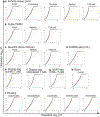

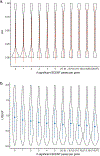

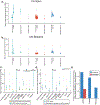
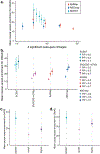

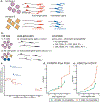

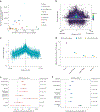

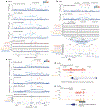
References
-
- Plenge RM, Scolnick EM & Altshuler D Validating therapeutic targets through human genetics. Nat. Rev. Drug Discov 12, 581–594 (2013). - PubMed
MeSH terms
Substances
Grants and funding
- P01 AI148102/AI/NIAID NIH HHS/United States
- U01 HG012009/HG/NHGRI NIH HHS/United States
- R01AR063759/U.S. Department of Health & Human Services | NIH | National Institute of Arthritis and Musculoskeletal and Skin Diseases (NIAMS)
- T32 HG002295/HG/NHGRI NIH HHS/United States
- T32 AR007530/AR/NIAMS NIH HHS/United States
- UC2AR081023/U.S. Department of Health & Human Services | NIH | National Institute of Arthritis and Musculoskeletal and Skin Diseases (NIAMS)
- R01 AR063759/AR/NIAMS NIH HHS/United States
- K08AR077037/U.S. Department of Health & Human Services | NIH | National Institute of Arthritis and Musculoskeletal and Skin Diseases (NIAMS)
- K08 AR077037/AR/NIAMS NIH HHS/United States
- R00 HG012203/HG/NHGRI NIH HHS/United States
- U01HG012009/U.S. Department of Health & Human Services | NIH | National Human Genome Research Institute (NHGRI)
- R56 HG013083/HG/NHGRI NIH HHS/United States
- UC2 AR081023/AR/NIAMS NIH HHS/United States
- T32AR007530/U.S. Department of Health & Human Services | NIH | National Institute of Arthritis and Musculoskeletal and Skin Diseases (NIAMS)
- UH2 AR067677/AR/NIAMS NIH HHS/United States
LinkOut - more resources
Full Text Sources
Molecular Biology Databases

